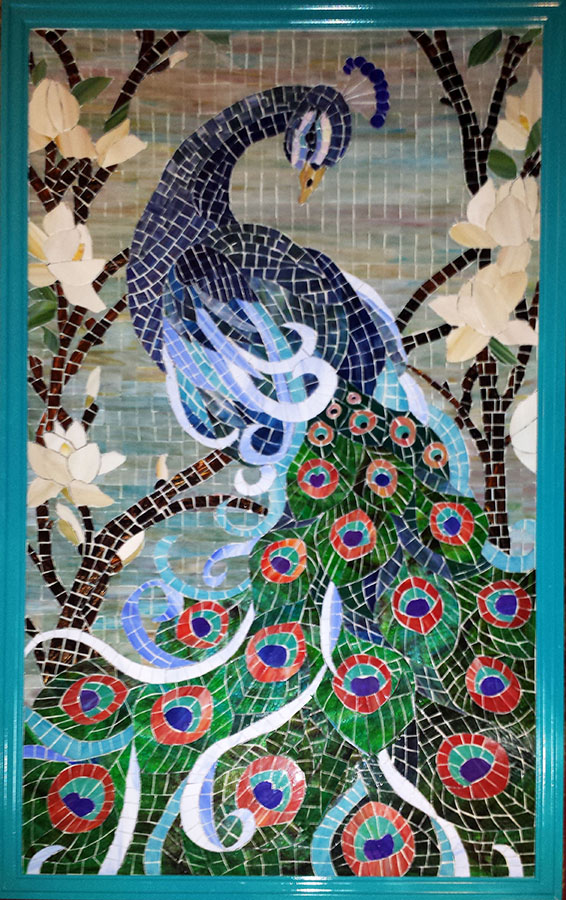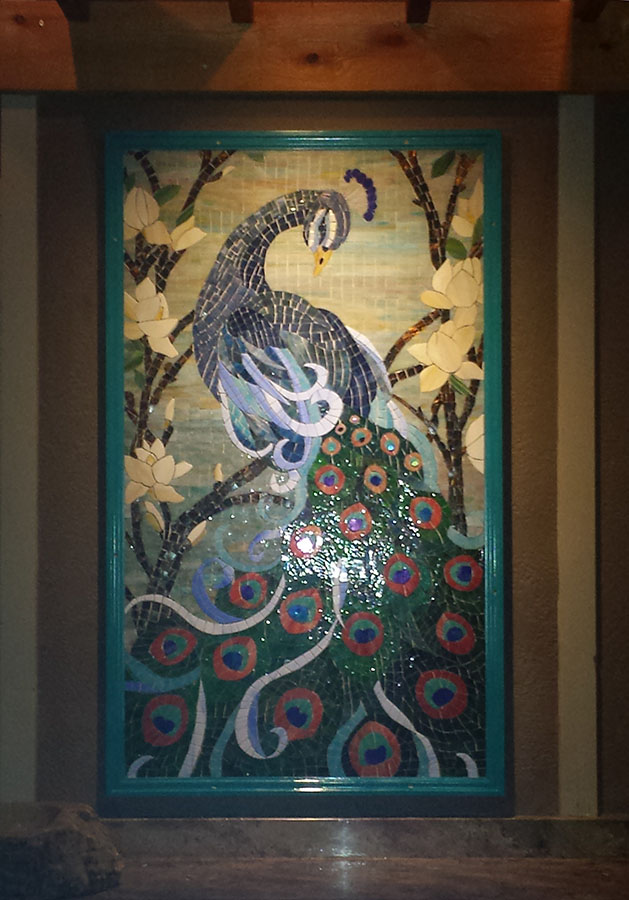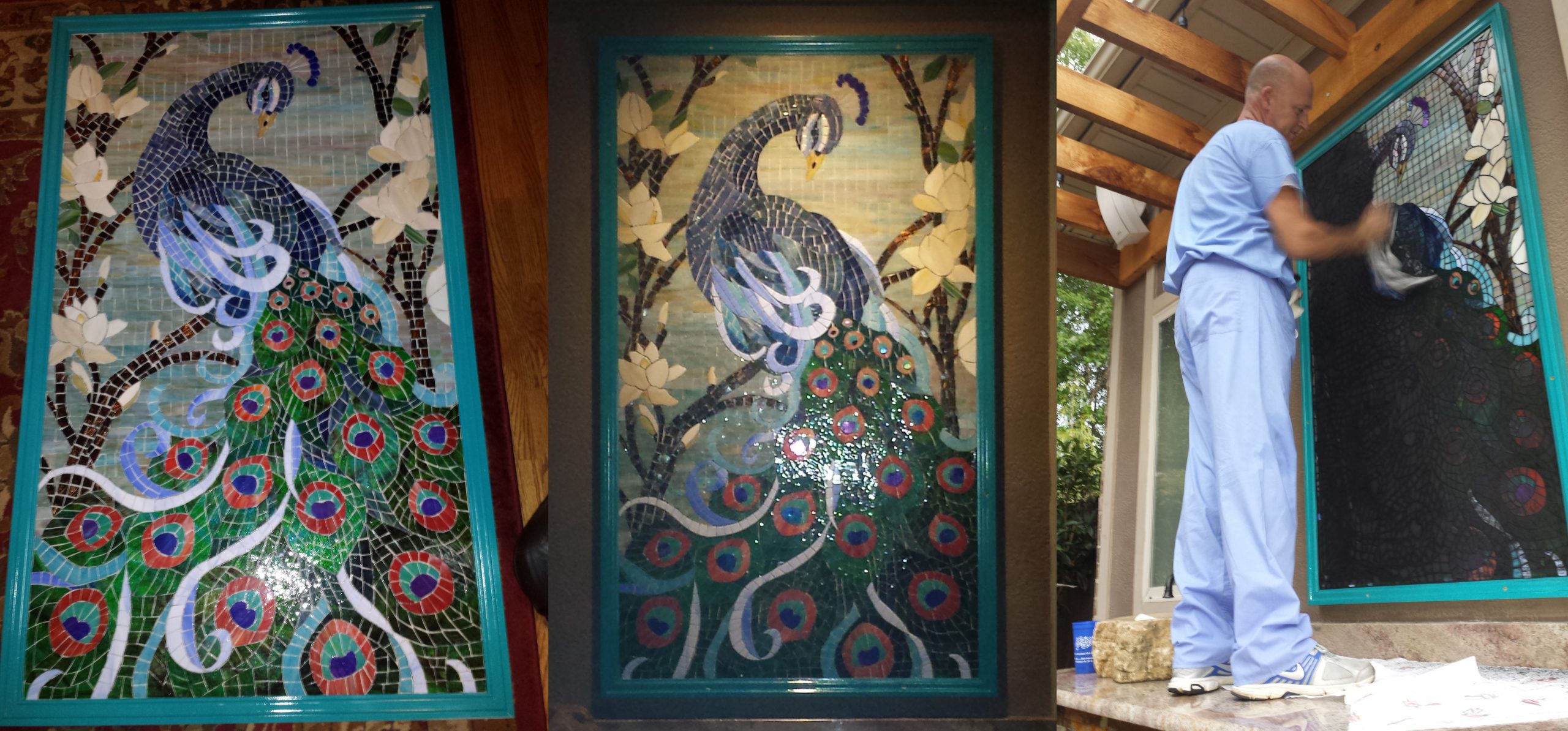My recent blog article about small mosaics has a section at the end that explains how to take catalog-ready photos of mosaic art. My article about mosaic frames includes some discussion about the best light for photographing artwork and the need to avoid foreshortening.
I know why the issue is coming up more and more in my thoughts.
People are emailing me photos of amazing artwork, but all too often the photos leave me wanting to know what the artwork really looks like without lighting or angle issues. I can tell that the art is good and that the photos don’t do it justice.
Some artists are bad about photographing their artwork because they are always consumed by their latest project and drop artwork quickly once it is deemed complete.
I am one of those artists. If I sound preachy, I am preaching to myself.
But there are lots of other people out there that need to hear the word.
Mosaic artwork is often completed without a proper photograph because the medium is so labor intensive, especially when the project is large or architectural.
I think this happens because there is the labor of cleaning up after the installation and because the artist has photographed the artwork at different stages of completion already.
I think those two fatigue factors work together synergistically to suppress the desire to do anything more, even if it is only to take a proper photo of the finished work.
What do I mean by a proper photograph?
I mean a photo made in outdoor light with no flash or glare or shadows, a photo made with the camera pointed straight at the surface, perfectly perpendicular with no angle or foreshortening of the image.
Why?
Having at least one photo that captures the artwork as definitively as possible is important for many reason.
Most people will only get to see a photo of your artwork and not the artwork itself.
Can you imaging if the only photos that existed of Van Gogh’s painting Starry Night were made in dim, indoor yellow light or were taken at an oblique angle or had shadows or glare?
You don’t have to be famous to make amazing artwork that people really want to see.
Look at how impressive artist Lonnie Parson’s mosaic peacock is!

Notice how the light in the grouting photo is perfect. Wouldn’t you like to see what the mosaic looked like in that light?
Double Jeopardy
All mediums of one-of-kind visual art can be lost to the artist when it is sold or given to someone else.
But a painter can decide not to give up a particular canvas if the results are spectacular.
What do you do when the artwork isn’t a painting on a canvas but a mosaic mortared to a wall?
All artists should photograph their artwork, but the rule applies twice to mosaicists, mural painters, and others working in an immovable medium.
Once a piece of artwork is incorporated into an architectural surface it is tied to a location that might not always be associated with the artist.
And a mosaic takes a lot more work than a painted mural.
Anything with that much labor invested in it needs to be photographed properly, moveable or not.
A Photoshopped Version
I did some quick cut and paste work with Photoshop in an attempt to show what Lonnie’s mosaic looks like without a glare on the surface.

Lonnie installed this mosaic on his house in Alabama but has since sold the house and moved. Lonnie thinks it actually helped sell the house. Look how good the mosaic looks in low light:



Leave a Reply